Recently returned from a trip to Sicily. It was my fist trip back, long overdue, since I first went 21 years ago. I find myself unable to resist posting a few pictures of the beautiful places we saw.

Our first 3 days were in the capital Palermo (North coast of the island). I have old but very fond memories of this place, from that last faraway visit. I remembered it as mysterious, beautiful, highly atmospheric, charged with history. I’m happy to report it hasn’t changed one bit!
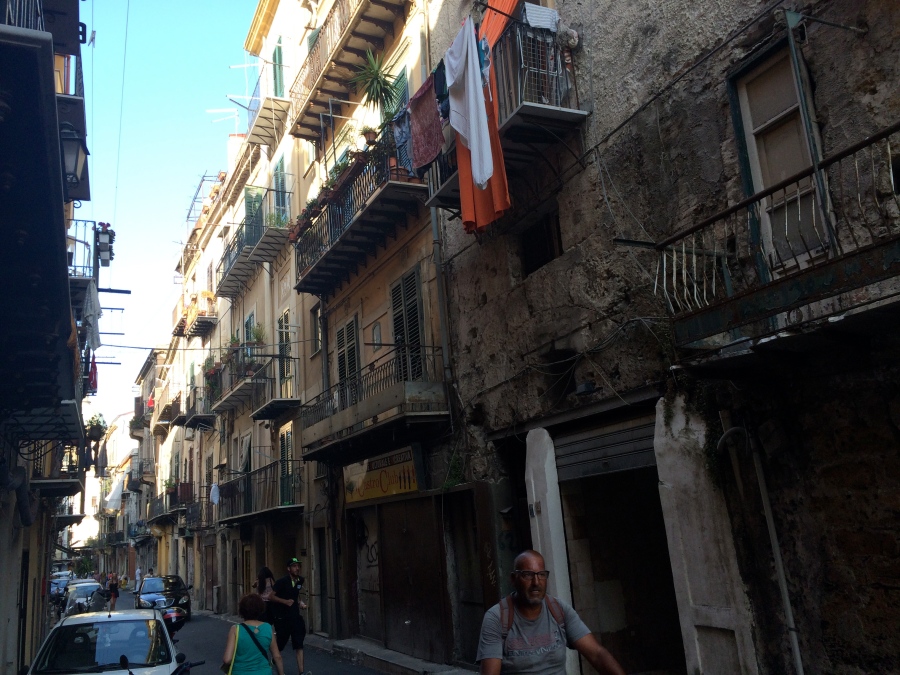
Palermo is my idea of an amazing palace to visit. Soaked in centuries, indeed millennia, of history.
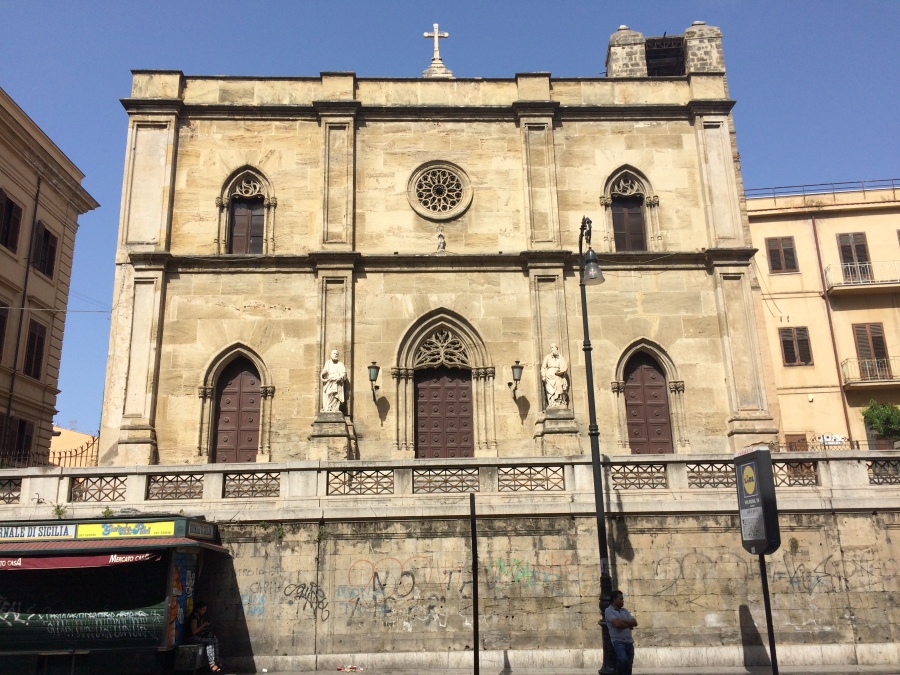
Like Sicily in general, the ancient Greeks were here, the Phoenicians and Carthaginians. (Sicily has the finest Greek remains outside of Greece itself, easily rivaling the mother country in that regard in fact) Romans, Byzantines, ancient Rome, Normans, Germans and Spanish rulers, all came and went. The most famous German came in the guise of legendary medieval monarch Frederick II (1215-1250) from the House of Hohenstaufen. As Holy Roman Emperor, routinely called Stupor Mundi (the wonder of the world) Fredrick based his court here, where he devised an incredible state, humane, enlightened, and efficient. He also invented the first recognizably modern civil service, streamlining administration and reform. (Goethe called him “the First European”) His court, multicultural and multi ethnic, full of Christian, Jewish and Arabic scholars, was the most dazzling, most erudite and sophisticated in all of Europe. Palermo was the envy of the world.

Later under Spanish, Arogonese and Bourbon rulers, Sicily, and Palermo, declined. By the 1600s and 1700s, absentee landlords from the surrounding countryside, neglected their huge estates there, using them purely as a source of cash, resulting in a chronic lack of investment and relying on a class of middlemen who would, eventually, evolve into the Mafia. Sicily still remains today one of the poorest parts of Italy, indeed of western Europe with many deep, seemingly intractable economic and structural issues. There is much injustice, poverty and sadness. And decay. It was subjected to not one but two bombing campaigns during WWII, (one each by the Allies and the Nazis) and some of the damage, even to UNESCO world heritage sites, have still not been repaired. Yet Sicily, and Palermo, remain beautiful and compelling. Palermo in particular is an exciting city, a tangled maze of street markets, alleyways and backstreets, sometimes dirty or neglected sure, but you’ll also meet with with kindness, with great food, and the whole place is studded with architectural wonders. Here’s just a selection..

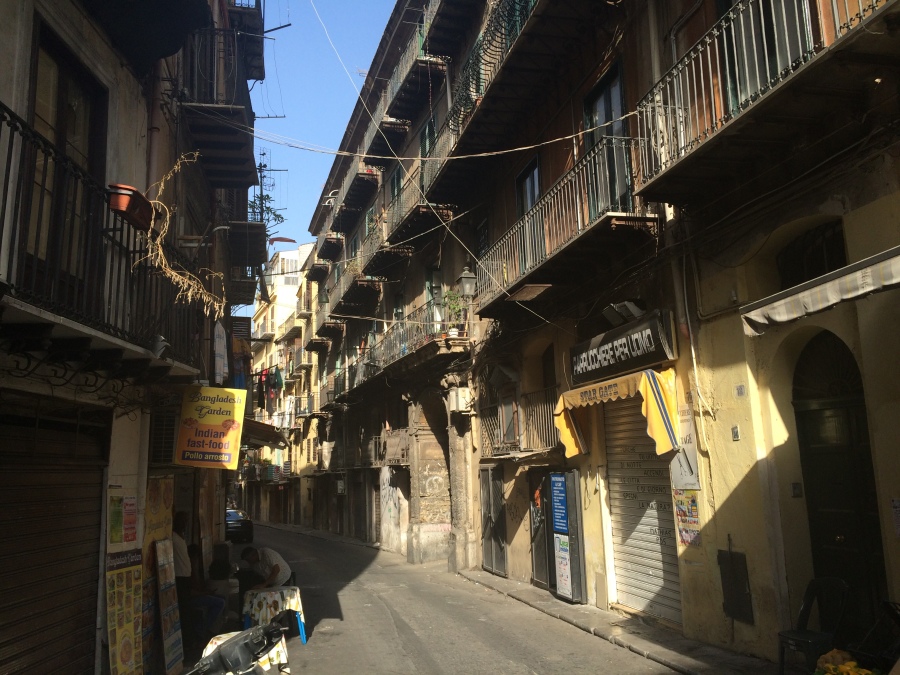
Our first morning there we “warmed up” by visiting this classic baroque church of S. Mateo.
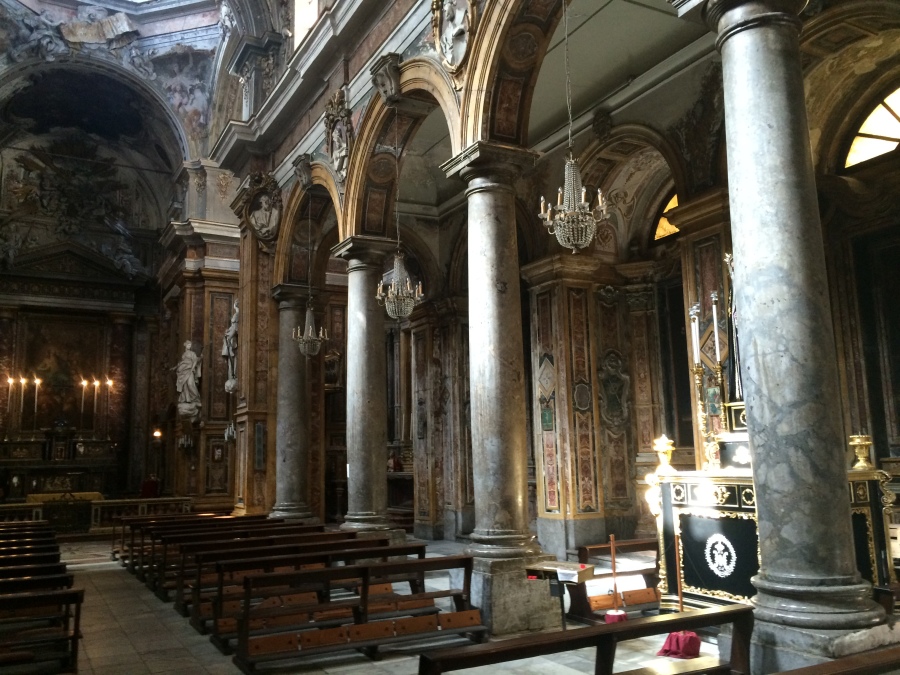
Here’s the fabulous vaulted and painted ceiling) below.
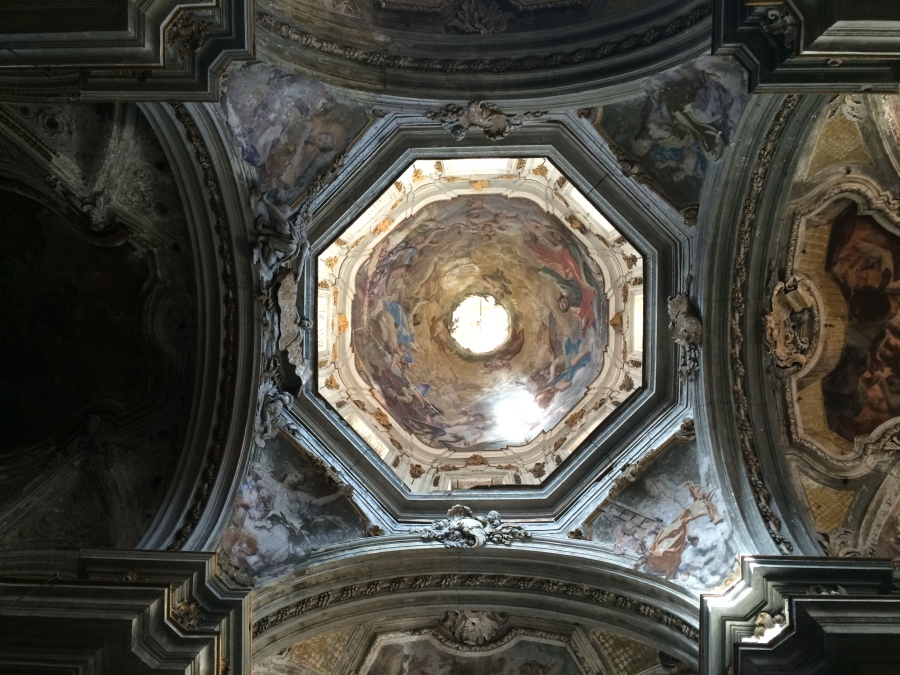
That first day and over the next 3 days we made our way to a dizzying selection of other marvels, including these two extraordinary, ancients churches, of San Caltado (directly below) and San Giovanni degli Ermiti (further below).
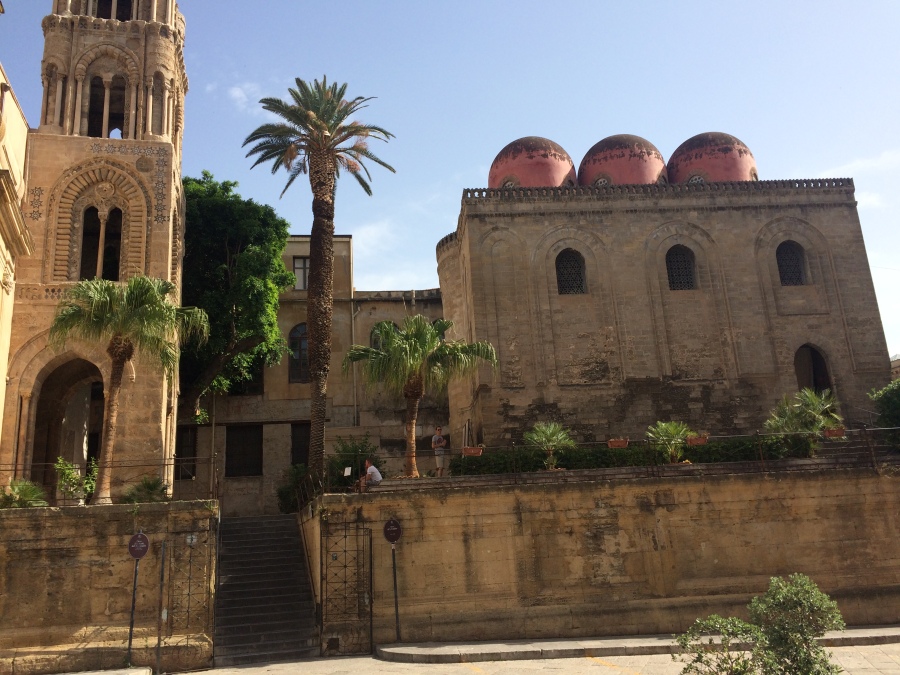
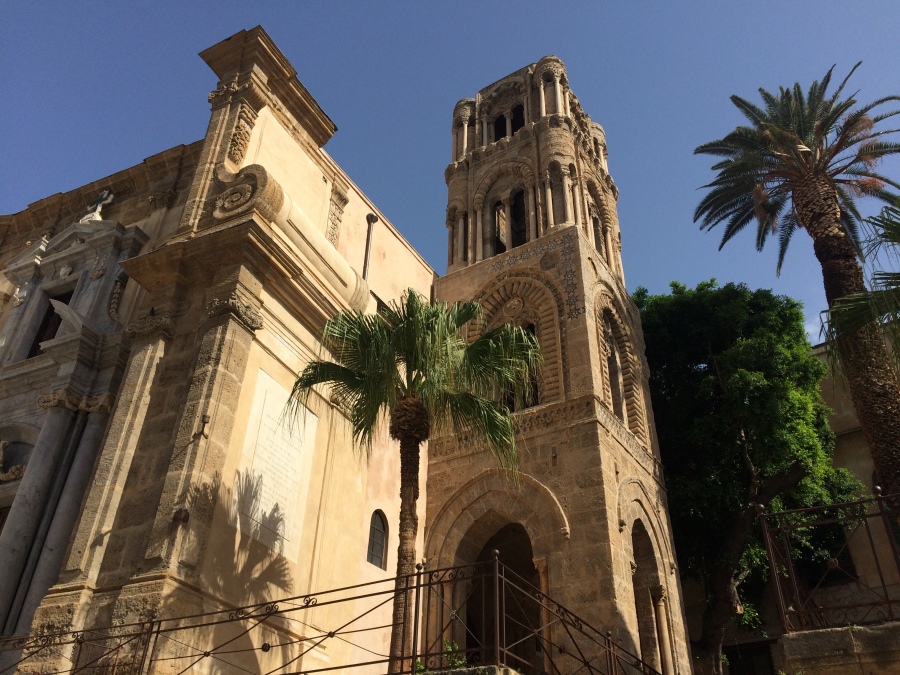
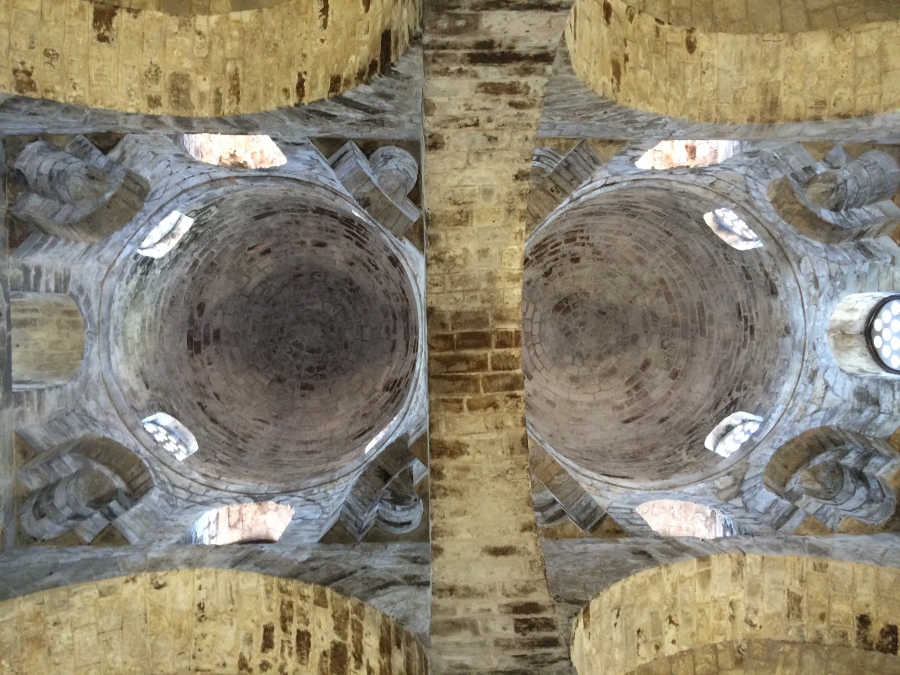
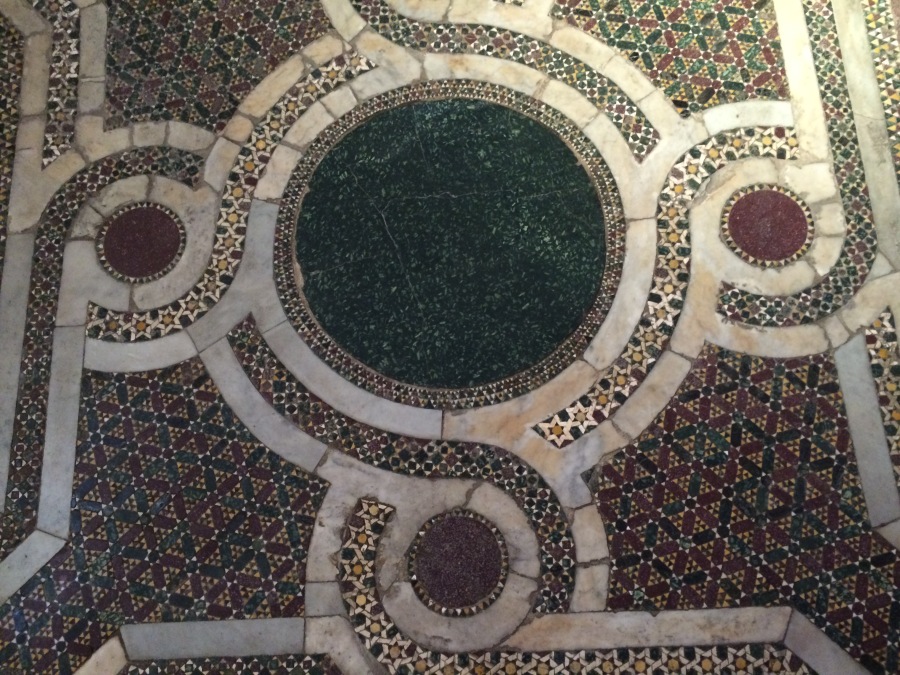
 above: San Cataldo.
above: San Cataldo.
Both as you see are, remarkable. They were built by Arab architects in the years immediately after the Norman takeover. The Normans realized the Arabs had extraordinary architectural, engineering, and artistic skills, and so did not make the mistake of expelling them. Instead they employed those skills. The results are an incredible fusion of Arab-Norman architectural idiom, so distinctive of, and so unique to Sicily.
below: San Giovanni degli Ermiti.

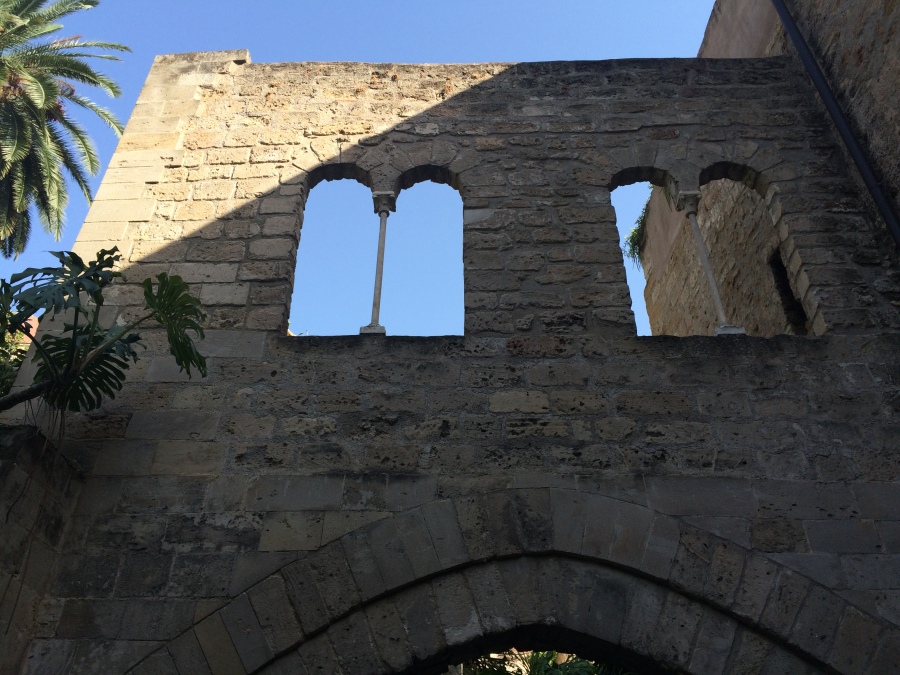
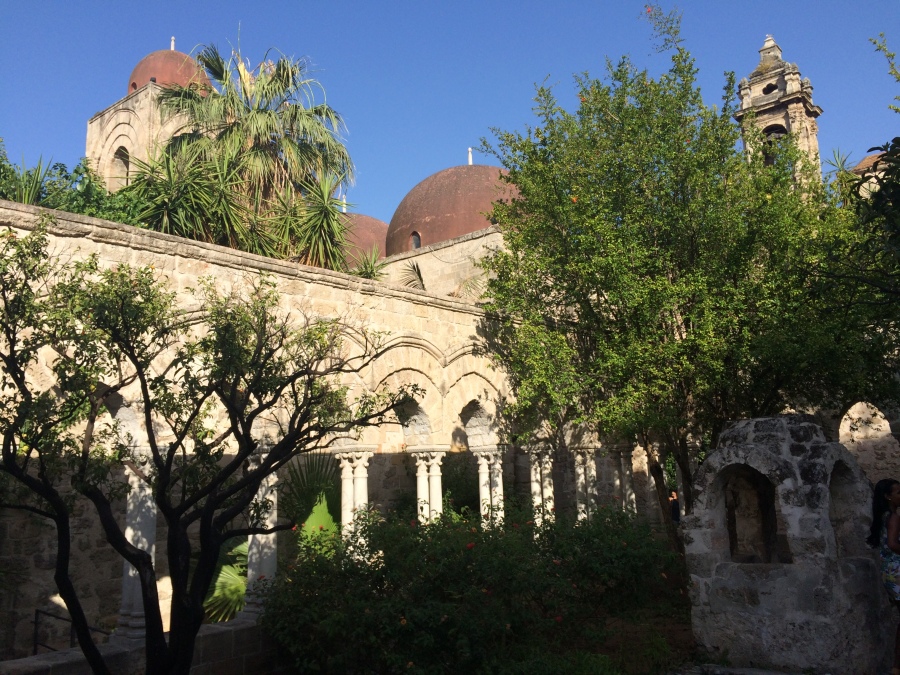
what makes San Giovanni degli Ermiti (S John of the Hermits) particularly magical are the cloisters, old well, and the lovely shaded gardens that surround it all, a blessing and a relief in the blinding, scorching, Sicilian sun. The overall effect is of a kind of paradise. We had the entire place practical to ourselves. Quite extraordinary.

Inside S Giovanni, the bare stipped down interior allows you too see the structure of the vaulting very clearly.
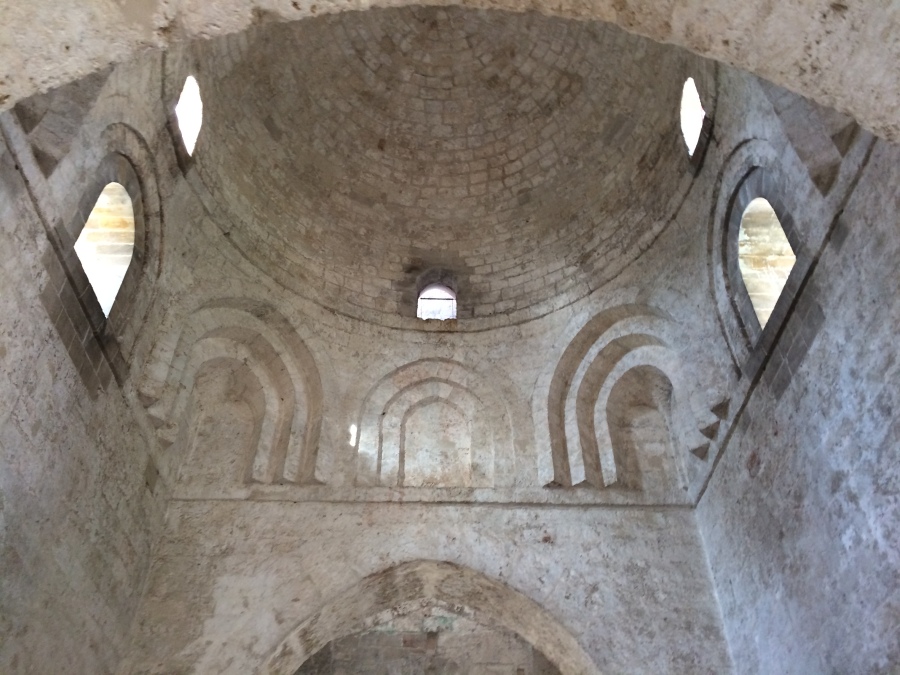
These concave domes, are of course the inside of those remarkable red domes outside.

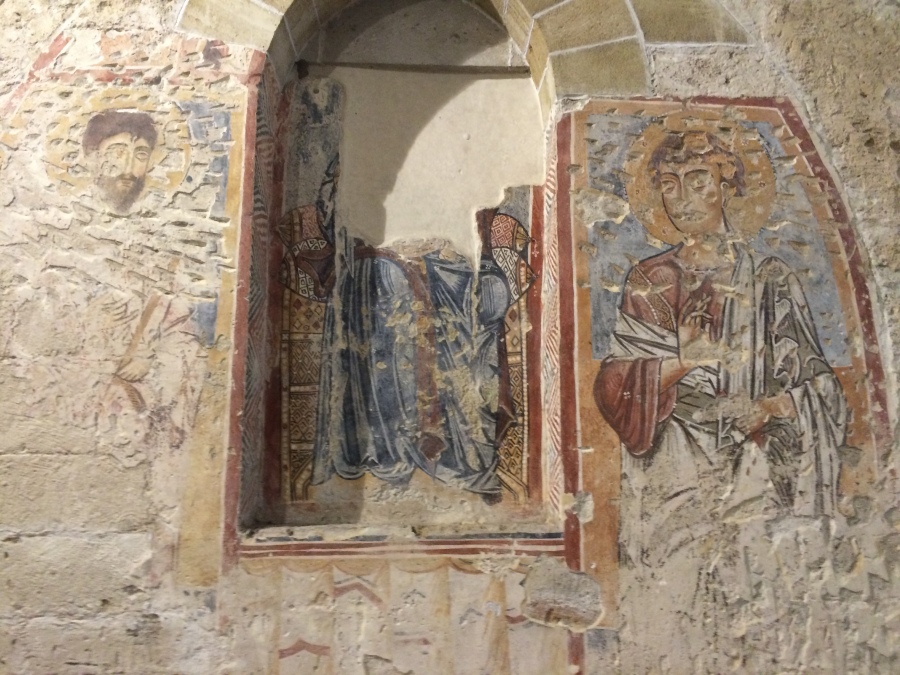
I was also taken with these fragments of frescoes. which we understood, from the admittedly rather garbled text provided, are medieval in origin. The entire complex of buildings was one of the most beguiling, atmospheric places I’ve ever visited. Much like Palermo overall.
Palermo is fantastic in general. One day, we went looking for some ancient Jewish ritual baths that had, apparently, been uncovered some years before. (There are other such baths, in Syracuse for example, to the east of the island) The ones in Palermo were advertised in several places, maps and books. We even, after a bit of cajoling, and a bit of sneaking around, managed to gain access to the courtyard of the palazzo where they’re reputedly located, (according to our map, and as confirmed by locals and various other sources) . But no, even after this initiative and subterfuge, the baths still proved curiously elusive! We bumped into several other people and couples also seeking them, in and around the same location, all with an equal lack of success.
I wondered if the baths were somehow behind or beyond this beautiful door. It was stubbornly locked. (I tried) We’ll have to find out on our next trip.
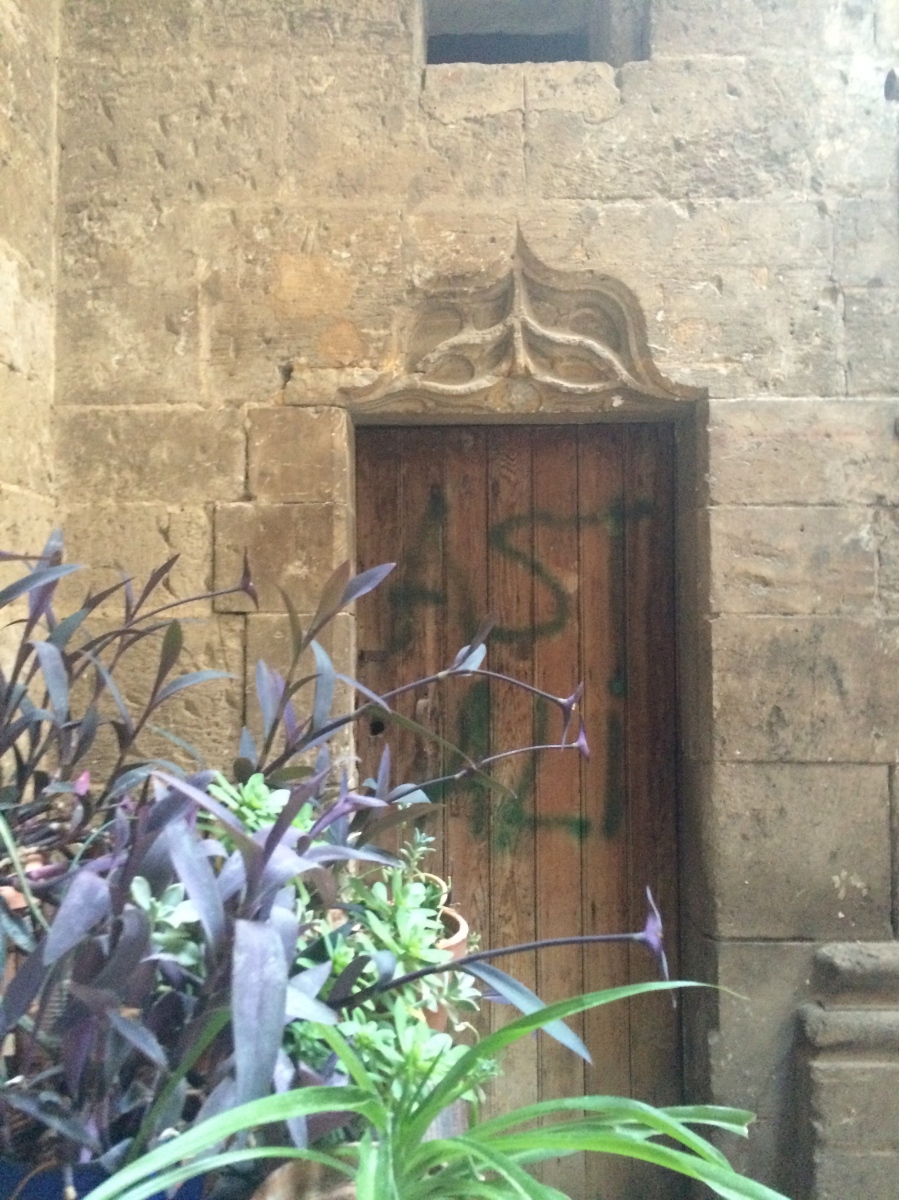
Still it gave us a great excuse to find this amazing palazzo, with this wonderful staircase,
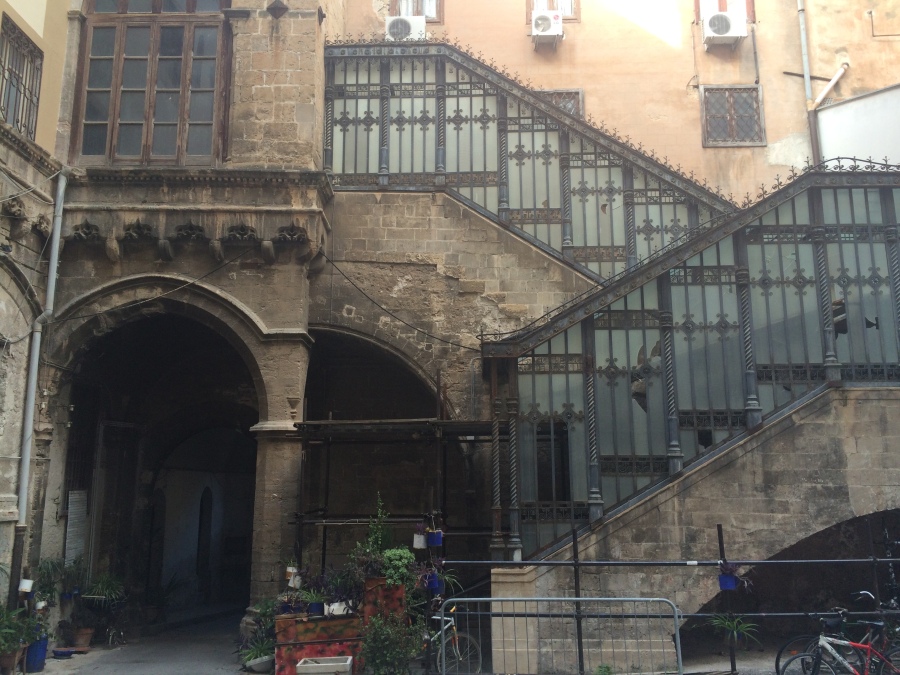

Courtyards, like cloisters have to be one of the great joys of Palermo, enclosed, mysterious, off the main thoroughfares, frequently shaded and leafy.
Behind these superbly battered double door, for example, lie the double interlocking courtyards of the enormous Palazzo Aiutamicristo.
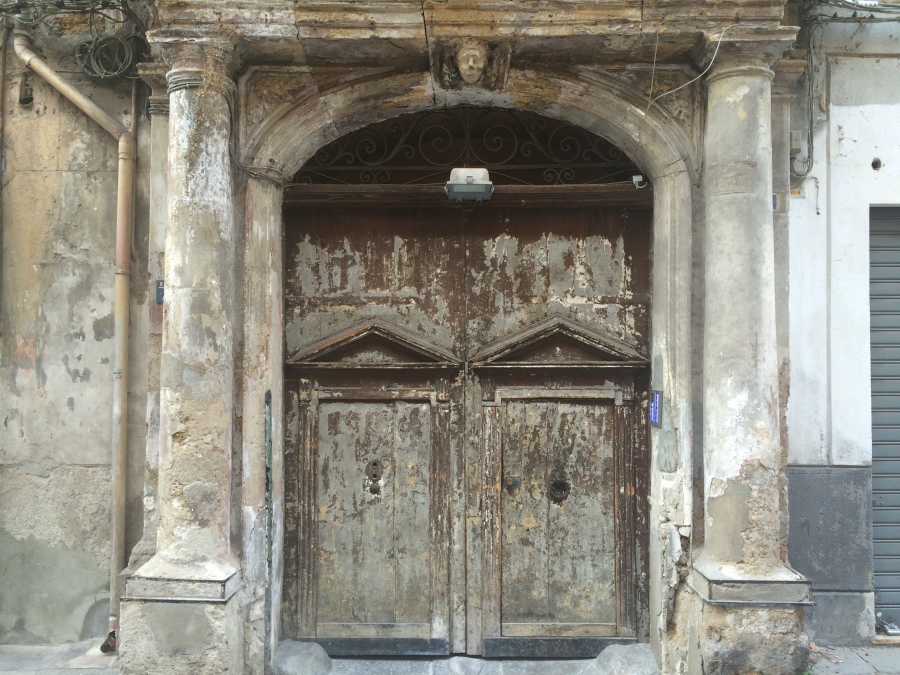
One half of the palazzo now belongs to the city council, we read, while the other still belongs to a Sicilian baron, who occasionally appears and smiles benignly at visitors. We spotted him and waved back. I imagine it was him, he seemed to fit the descripotion, and indeed seemed friendly, remarkably tolerant of tourists like ourselves who sneak inside the courtyard gates, to gawp at this extraordinary house and gardens.
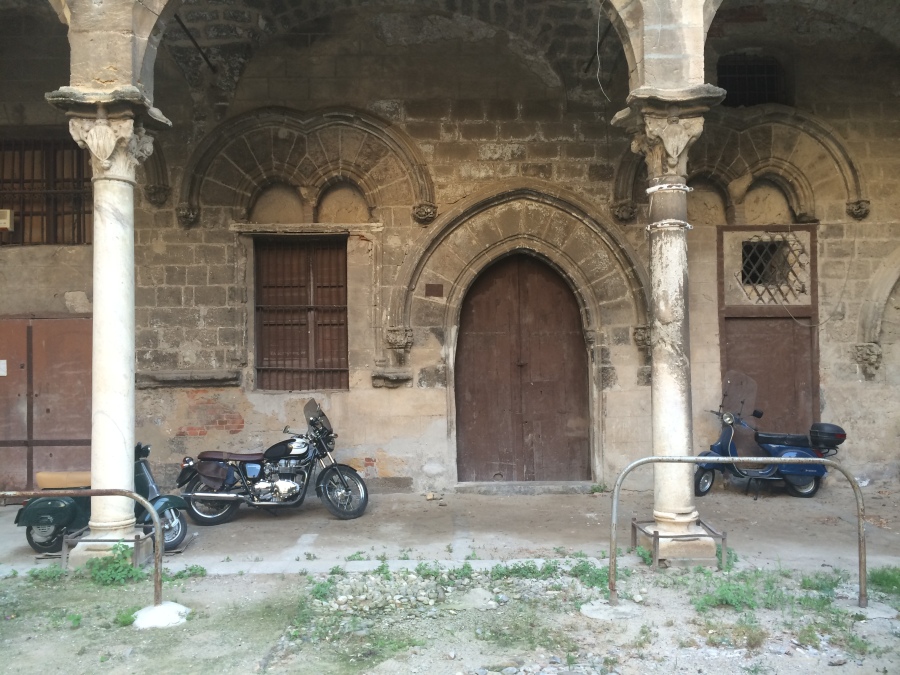
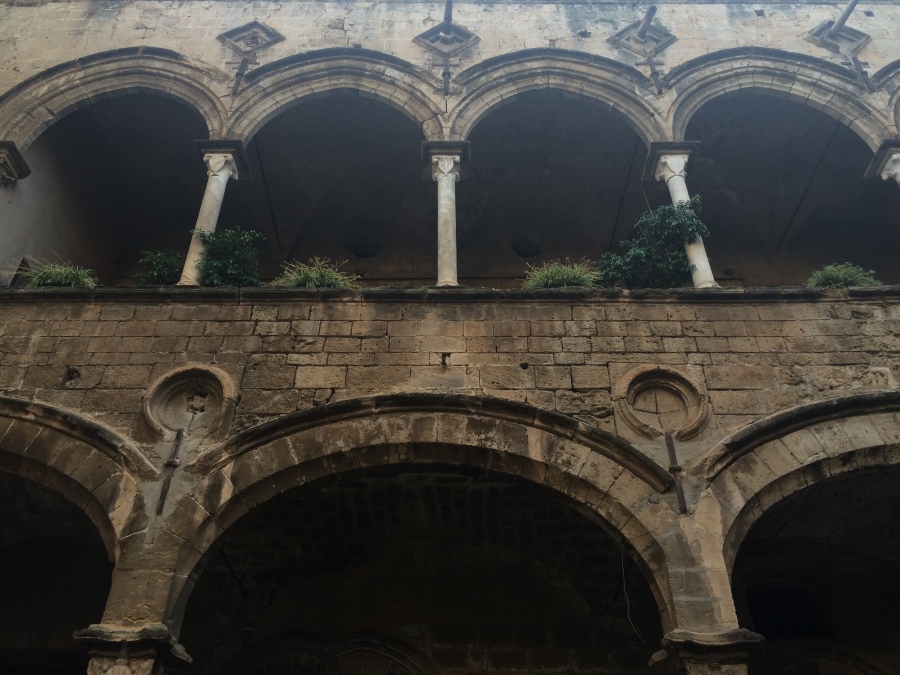
As well as its more subtle delights, Palermo boasts several undisputed treasures. Like the Capella Palatina, built by Roger II from around 1132, these days internationally acknowledged as a masterpiece of the medieval and Norman-Arab- Byzantine style, with some of the best mosaics ever created.

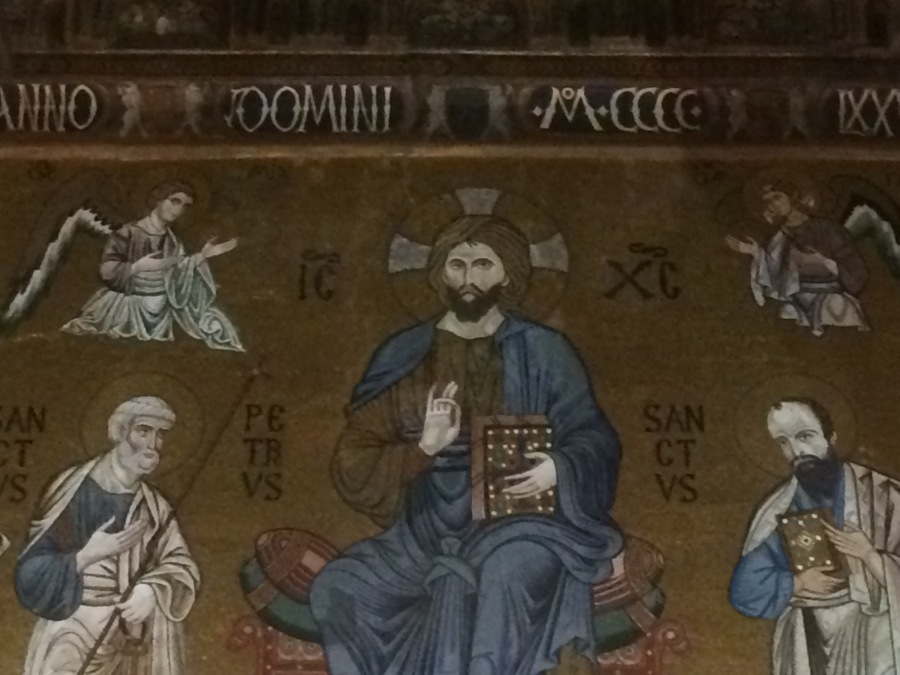
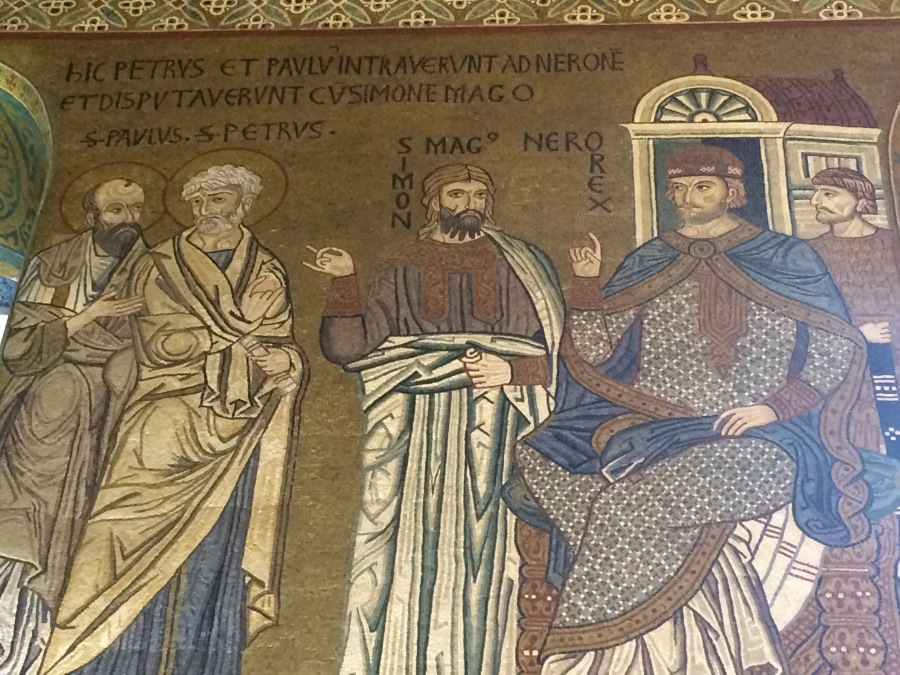
this one above shows SS Peter and Paul, with as you see Simon Magus and the emperor Nero.

The Cappella Palatina Palermo also has an incredible carved wooden ceiling carved by Arab artists in the Arabic “stalactite” style. It is painted and carved and full of endless detail, abstract and figurative, with endless fractal geometry, sets and patterns and subsets, full of hexagons and octagons and the negatives spaces in between., Its easy to get dizzy, contemplating the detail and the complex, interlocking geometric shapes.

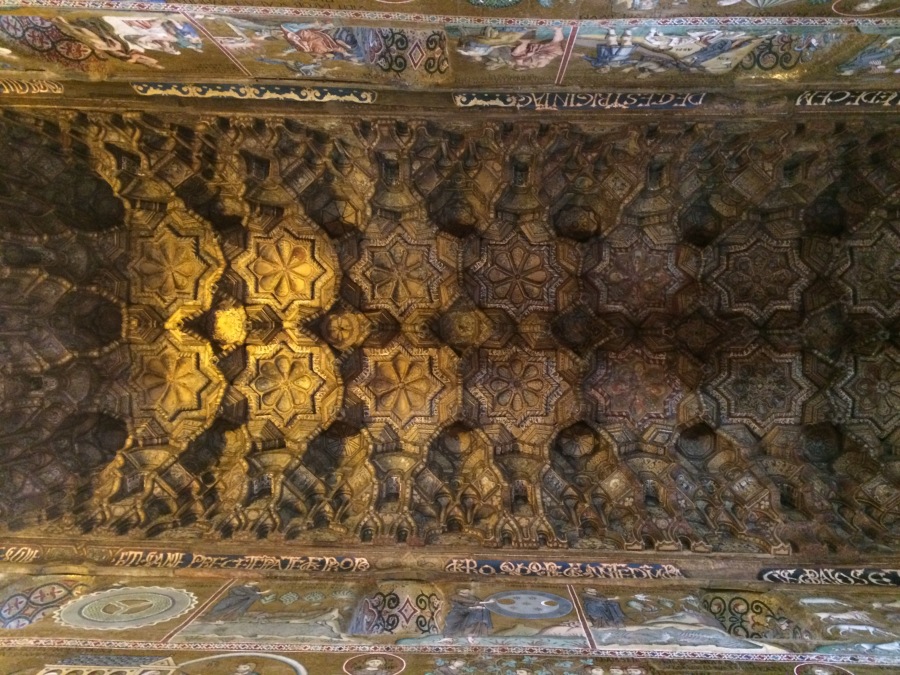
Some of the sculpture and carved decoration that adorns the bases and tops of the columns is also superb. I was especially taken with these lions, each casually chomping away on a horse or an ox. Or a man.

The ox seems stunned, almost resigned to his doom. In contrast, there is something gruesome, cruel even, about the way the man, still alive, but clearly doomed, fruitlessly attempts to push away the lion. In contrast to the man’s puny strength, and futile resistance, the lion’s giant paw is right across the mans face, talons splayed. Now i look at it again in fact, the lion bites he into the side of the body, threatening to tear it right away. Surely therefore the man is depicted poised at the very moment of his death. Perhaps therefore that moment had some special religious significance. I don’t know. But i have seen medieval sculpture elsewhere which alludes to the souls transition to heaven, and which uses animal imagery to do it. Perhaps this is in a similar vein. I just wish I knew more. Perhaps I’m talking nonsense, and it does not refer to death at all, but rather to perpetual torment. In other words, to hell.
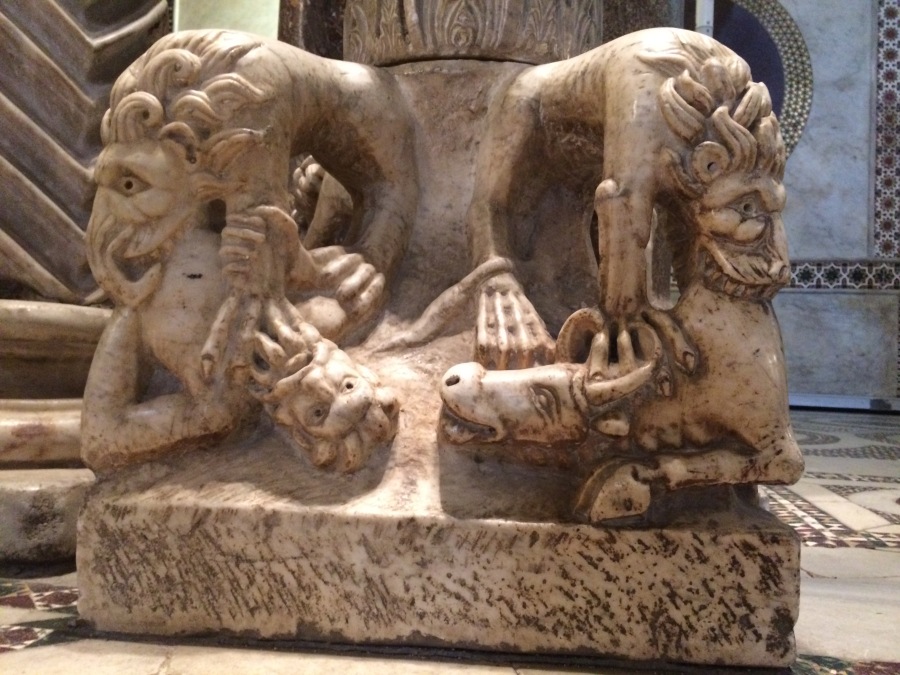
I have to say, I would love to visit the Palatine Chapel again, with a real expert or scholar who had studied the period and the imagery in the many detail, and who could offer guidance in reading the language of its symbolism, in the mosaics, the sculpture and the ceilings.
Thank you for reading. All text and pictures remain copyright of Arran Q Henderson & of Dublin Decoded. if you borrow please be nice and provide a credit, and a link to this blog, Thank you.
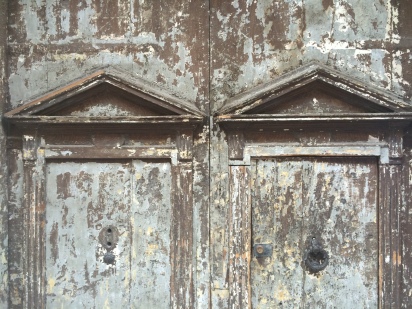
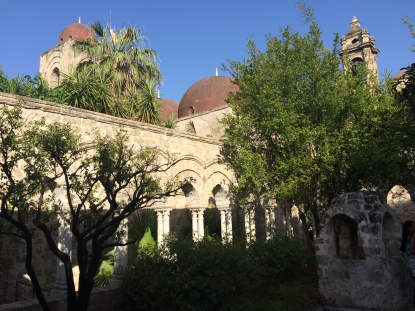
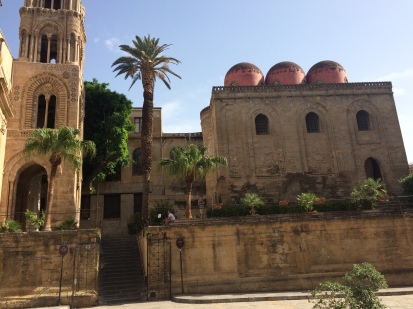

Oh, fantastic! I had a whistlestop tour of Sicily last year – all too short, I must return!
LikeLike
I’m scarcely back myself less than 110 days , and I’m already aching to get back again myself!
LikeLiked by 1 person
😀😀
LikeLike
*jealousy*
LikeLike
You would absolutely love this place Jane. It would speak to you deeply I suspect, the history and the legends and the medieval romance of it all.
LikeLike
I know it would! I fell in love with Sicily via Pirandello years ago and have still never been there.
LikeLike
Breathtaking photos. Just when I thought they couldn’t get any better, the photos of the carved wooden ceilings…brilliant. Thanks so much for sharing.
LikeLike
the pleasure is all mine Oglach. Delighted you enjoyed. Thanks so much for all your kind comments and support over the last year. Always wonderful to get feed-back like that. Hope all is well with you and yours. -Arran.
LikeLike
It all looks very tempting!
LikeLike
Yes, indeed. And we’d love to see your pictures of Sicily one day Murray. They’d put mine in the shade. You’d love it i suspect. The light there is incredible, and the textures on all those wonderful old buildings. Lots of vivid street life too, in the markets, etc. Just watch your camera gear, eh? Most people are warm and wonderful, but obviously there is a bit of petty crime and whatnot. ( somebody tried to fleece me on a couple of small cash transaction) Still, i suspect you’ve been in far worse places, and can well take care of yourself. 🙂 Go when you get a chance. -A.
LikeLike
The pic of the damaged frescoes shows chisel marks all over. Looks like they had been plastered over by iconoclasts and later revealed
,
LikeLike
You may well be right. I can’t comment on the idea of actual iconoclasts per se. The frescoes date from after the period of Islamic rule in Sicily. And of course there was never a protestant reformation iconoclasm there either. So that the 2 usual iconoclast suspects discounted! But who knows, you may be right about it (iconoclasts). It’s certainly possible or even probable, they were painted or plastered over at some point.
LikeLike